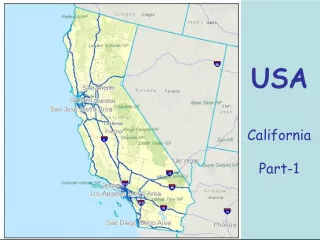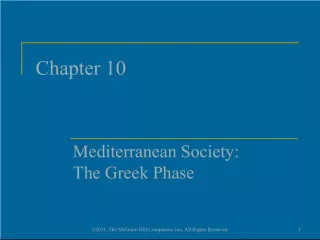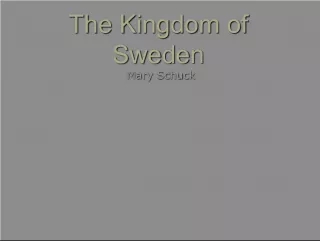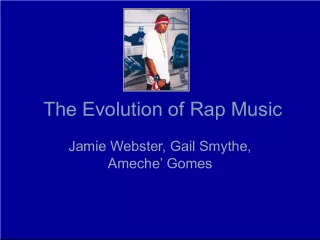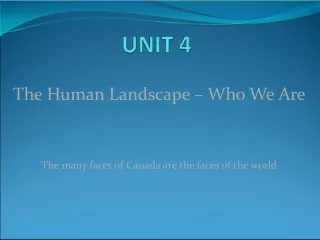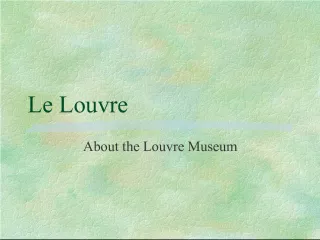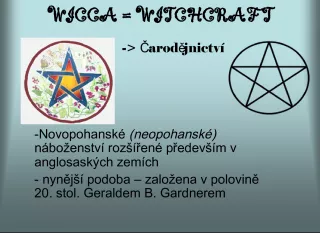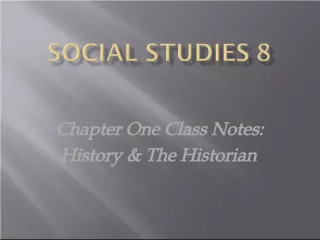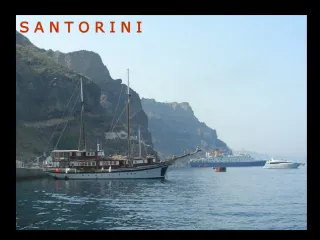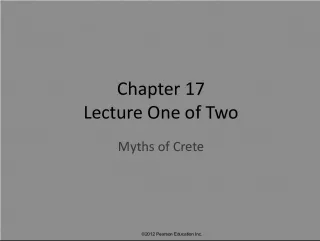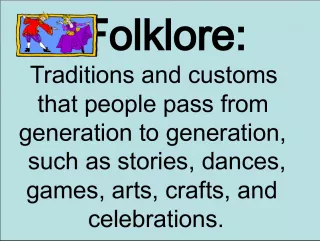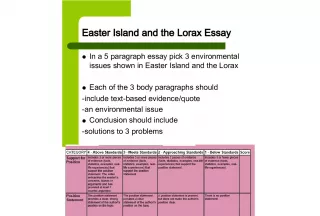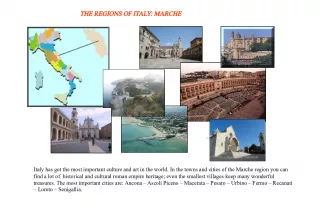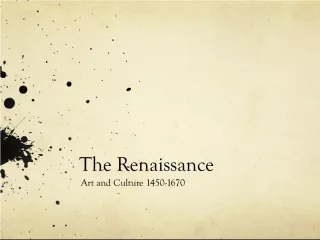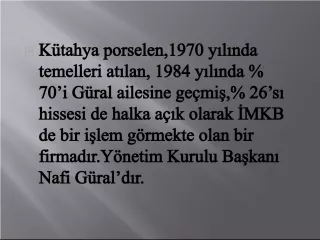Exploring Cyprus: A Mediterranean Island with Rich History and Diverse Culture


Cyprus, located in the eastern Mediterranean Sea, is known for its history as the main supplier of copper in antiquity, as well as its modern membership in the European Union. Despite its small size, Cyprus has much to offer in terms of cultural diversity, beautiful landscapes, and delicious cuisine.
- Uploaded on | 7 Views
-
 jadebogan
jadebogan
About Exploring Cyprus: A Mediterranean Island with Rich History and Diverse Culture
PowerPoint presentation about 'Exploring Cyprus: A Mediterranean Island with Rich History and Diverse Culture'. This presentation describes the topic on Cyprus, located in the eastern Mediterranean Sea, is known for its history as the main supplier of copper in antiquity, as well as its modern membership in the European Union. Despite its small size, Cyprus has much to offer in terms of cultural diversity, beautiful landscapes, and delicious cuisine.. The key topics included in this slideshow are Cyprus, Mediterranean, history, culture, European Union,. Download this presentation absolutely free.
Presentation Transcript
2. C yprus (Cyprus) - a country in Asia located in the eastern part of the Mediterranean Sea off the coast of Turkey, Syria and Lebanon. From 1 May 2004, is a member of the European Union. Name the island comes from the Latin names of copper (Cuprum), of which Cyprus was the main supplier of antiquity.
3. C yprus is a country located on the island of Cyprus. In terms of political division of Cyprus is considered to be Europe, but in terms of location can be found in Asia - in the Middle East in the eastern part of the Mediterranean Sea, south of Turkey.
4. C C yprus - island in the eastern Mediterranean. The third largest island in the Mediterranean Sea after Sicily and Sardinia. During the Macedonian civil war came there to battle (306 BC) In this fight Demetrius I of Macedon, led 150 ships, Ptolemy prevented the fleet, consisting of 140 ships and 200 transport which carry 10 000 infantry. Ptolemy fled from 8 ships. After the battle to put his country in Cyprus
5. Larger cities: Nicosia, Limassol, Larnaca Borders: Cyprus, an island not being a border with any country except northern Cyprus. Sea coast has a length of 648 km H ighest point Mount Olympus 1951 m above sea level Administrative divisions: administratively divided into 6 districts Movement car: left Religion: Orthodox Church dominates Religious diversity: Orthodox, maronici, Muslims, others Nationalities: Greeks, 78% (99.5% Greeks live in the Greek part of the island), Turks 18%, 4% and other nationalities
6. I mnos pros tin Eleftherian is anthem of Greece, as well as from the 1960 anthem of Cyprus. In Greece, as the state anthem has been approved by King George I in 1864 Glcksburg year. Guinness Book of Records lists it as the longest anthem . The author of the poem "Imnos pros tin Eleftherian" Hymn to freedom is a Greek poet patriotic Dionsios Solomos, and the music composed Nikolaos Mantzaros. However, only the first verse is used as an anthem. Hymn to freedom is a Greek poet patriotic Dionsios Solomos, and the music composed Nikolaos Mantzaros. However, only the first verse is used as an anthem.
7. Imnos pros tin Eleftherian , , , [] [] . ' , , [or -], , . Meet you for a long time, recovered admirably, the lights in thy sight and the splendor of your sword. The Greeks thy holy tombs might troupe triumphs, welcome you again Hail, Liberty, Hail!
8. Cyprus flag is a white rectangle, which are located in the center: a figure resembling the shape of the island of Cyprus, and two green olive branches. Color white and green olive branches is a symbol of peace between two communities of the island: Greeks and Turks. Auric color of the island, refers to the Latin origin of the name Cyprus
9. Coat of arms of Cyprus presents the pigeons and olive branches, symbolizing peace. At the show date in 1960 the year of independence of recovery after a period of British colonization.
10. It is situated in the central part of the island in the plain Mesari, on the river Pedias (Kalindere). Constitutes the main seat of government and business center. Nicosia is the capital of the administrative unit: Nicosia District. Despite the recent symbolic gestures liquidation of small portions of the wall divisive city made by representatives of both communities living in Nicosia, the capital of Cyprus remains the only divided capital in the world, from the northern part of (Turkish) and southern part of southern NICOSIA NICOSIA
11. S econd-largest city in Cyprus, the Gulf of Akrotiri on the south coast of the island, a center of Limassol district. Approximately 161 thousand. inhabitants (2001). After 1974, when Northern Cyprus was occupied by Turkish troops, the city has changed a tremendous transformation, becoming the largest transit port in the Mediterranean Sea. Its value has decided a long cultural tra On its premises, there are several museums and archaeological significance of the world. Limassol has been established between the two ancient cities of Amathus and Kurion. For this reason, the Byzantine period was known as Neapolis. The network is pulling the resort at the eastern coasts, until a nearby Amathous. City is continually developed along the coast, approximately 500 m per year, and towards the foot of the massif Trdhos dition . Limassol
12. Larnaca (gr. ), Kition - a city on the south-east coast of Cyprus. Leading airport in Cyprus is located near the city. In antiquity called it Kition (gr. , Lac. Citium). In 2008, resident here 52 thousand people. The third-largest city in the country. Larnaca
13. Salamis (Salamis) - the ancient town and port situated in Cyprus, the main town in the island of seventh century BC ancient Salamis Pediajos lay on the river in the east of the island. According to legend it was founded by Teukros, (Teucer) son of Telamon Salamis Greek. The town was founded in the twelfth century BC WV century BC was the capital of Cypriot cities. In 450 BC took place played battle of Salamis between Greek and Persian fleets during the Persian wars. In the fourth century Salamis earthquake struck and then was rebuilt as Constance by Constantine the Great. In the seventh century Arab invasions issued by the city was ruined.
14. Royal Tombs (gr. , called Tombs of the Kings) - a large ancient necropolis, located to the north-west of the town of Paphos in Cyprus. The complex consists of about a hundred underground tombs, which dug into the rock. They were made between III, IV century BC and AD (greater part of them is dated by the Fourth century BC). In some of them can be found in a column style doric, on the walls of the well preserved remains of frescos. Although the necropolis was known and studied for centuries, systematic archaeological work began on it until the end of the 70s Twentieth century.
15. O mera mosque in the vicinity of the main urban markets, within the limits of the Wall. Originally a church converted into a mosque in 1571 by laying Mustafa Pasha, who believed that the fourteenth century temple dedicated to St. Mary was built at the place where the prophet Omer stopped when a visit to Nicosia. Most of the original building was destroyed by artillery. The door to the main entrance belong to XIV - century buildings. Residues of buildings of the late Renaissance period, you can see the north-east side.
16. Museum of Ethnography Cyprus Former Cyprus Folk Art Museum, founded by the university Plateia Arybisk. Kyprianou. An extensive collection of Cypriot folk art from the nineteenth and early twentieth century, includes woodcuts, tapestries, embroideries, pottery, national costumes and hand- woven products.

